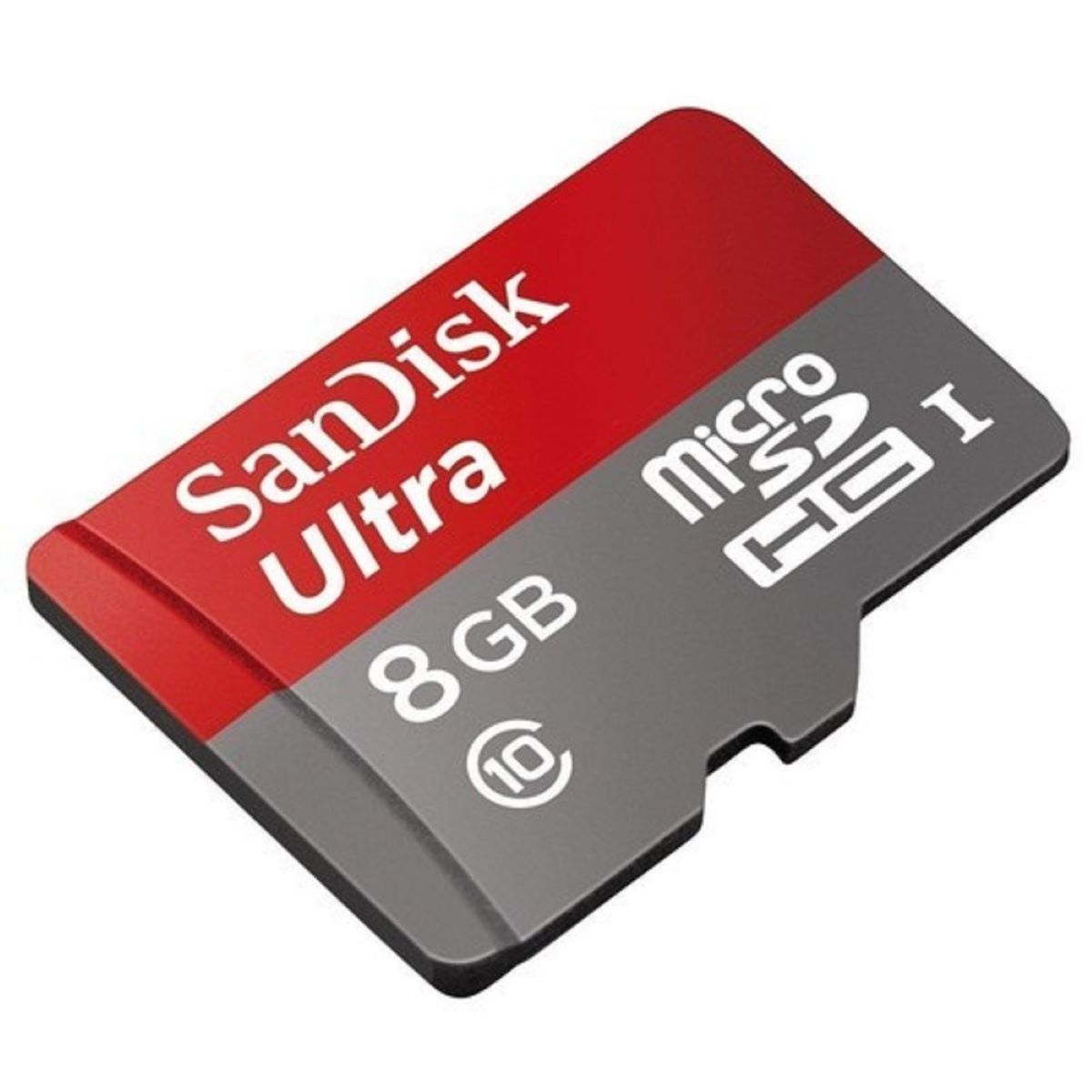Introduction
Welcome to the world of wholesale construction lending, where real estate developers and builders can access the funds they need to bring their projects to life. Wholesale construction lending is a specialized form of financing that provides essential capital for residential and commercial construction projects.
When it comes to large-scale construction projects, traditional lending options may not always meet the unique requirements of developers. This is where wholesale construction lending comes in. It offers a tailored financing solution that addresses the specific challenges and demands of the construction industry.
In this article, we will explore what wholesale construction lending entails, how it works, its benefits and drawbacks, the qualifications required to access this type of financing, and tips for a successful wholesale construction lending application.
Whether you are a seasoned developer or a newcomer to the construction industry, understanding the ins and outs of wholesale construction lending can be invaluable. With this knowledge, you can make informed decisions and secure the necessary funds to execute your construction projects with confidence.
Definition of Wholesale Construction Lending
Wholesale construction lending refers to a type of financing specifically designed to meet the unique needs of real estate developers and builders engaged in construction projects. It is a specialized form of lending that provides the necessary capital to cover the costs associated with residential or commercial construction.
Unlike traditional loans, wholesale construction lending focuses on the future value of the completed project rather than the borrower’s creditworthiness or existing assets. Lenders assess the potential profitability of the project and consider factors such as the location, market demand, and feasibility studies. This approach allows developers to secure financing for their construction projects based on the project’s anticipated value and profit potential.
Wholesale construction lending typically involves two distinct stages: construction loans and permanent loans. Construction loans are short-term loans that cover the costs of construction, including materials, labor, and other related expenses. Once the project is completed, the developer can then secure a permanent loan, which repays the construction loan and provides long-term financing for the property.
It’s important to note that wholesale construction lending is not limited to individual builders or developers. It also applies to lending institutions that provide construction loans to builders or developers in bulk. These lending institutions may offer wholesale construction loans to multiple clients, pooling their funds to finance various construction projects simultaneously.
Overall, wholesale construction lending offers a specialized and flexible financing solution tailored to the unique needs of the construction industry. It allows developers to access the necessary capital to bring their projects to fruition, while lenders can mitigate risks by assessing the potential profitability of the construction projects.
How Wholesale Construction Lending Works
Wholesale construction lending operates through a structured process that involves various parties, including developers or builders, lenders, and sometimes even intermediaries such as brokers. Understanding how wholesale construction lending works can help developers navigate the financing process and maximize their chances of securing funding for their construction projects.
The first step in wholesale construction lending is for the developer or builder to identify a lender who specializes in providing construction financing. This can be a bank, credit union, private lender, or even a specialized construction finance company. It is crucial to choose a lender with experience in construction lending, as they will understand the unique requirements and challenges of the industry.
Once a lender is selected, the developer must submit a loan application, along with a detailed proposal for the construction project. The proposal typically includes a comprehensive business plan, construction plans, cost estimates, and other relevant documents that showcase the project’s viability.
The lender will then assess the proposal and evaluate the potential profitability of the project. This assessment includes factors such as market demand, location, financial projections, and the developer’s track record. The lender may also conduct site visits and due diligence to gather additional information to evaluate the project’s feasibility.
If the lender approves the loan application, they will offer terms and conditions, including the loan amount, interest rate, repayment period, and any specific requirements or conditions. The developer must carefully review these terms to ensure they align with their project goals and financial capabilities.
Once the loan terms are agreed upon, the developer will enter into a loan agreement with the lender. This agreement outlines the responsibilities of both parties, including disbursement schedules, reporting requirements, and compliance with construction regulations and permits.
Throughout the construction process, the lender will typically disburse funds in stages or “draws” based on the project’s progress. The developer must provide documentation and proof of completed work to receive each draw payment. This ensures that the funds are used for their intended purpose and that the construction project is progressing as planned.
Once the construction is complete, the developer will then secure a permanent loan to repay the construction loan and obtain long-term financing for the property. This permanent loan may be provided by the same lender or another financial institution, depending on the developer’s preferences.
Overall, wholesale construction lending involves a thorough evaluation of the construction project’s viability, careful negotiation of loan terms, and diligent monitoring of funds disbursed throughout the construction process. This collaborative effort between the developer and lender helps mitigate risks and ensures the successful completion of construction projects.
Benefits of Wholesale Construction Lending
Wholesale construction lending offers a range of benefits for both developers and lenders involved in construction projects. Understanding these advantages can help developers make informed decisions about their financing options and lenders tailor their services to meet the needs of the construction industry.
1. Access to Adequate Capital: Wholesale construction lending provides developers with access to the necessary capital to fund their construction projects. Traditional lending options may be limited in terms of the amount they can lend or their understanding of the unique challenges of the construction industry. With wholesale construction lending, developers can secure financing that aligns with the scale and complexity of their projects.
2. Tailored Financing Solutions: Wholesale construction lending offers flexible and customized financing solutions designed specifically for the construction industry. Lenders take into account the unique characteristics of construction projects, such as the future value of the completed property and the anticipated profitability. This tailored approach allows developers to obtain the right type of financing that suits their project requirements.
3. Mitigation of Risk: Lenders specializing in wholesale construction lending conduct a thorough assessment of the construction project’s viability, minimizing the risk exposure for both parties. By evaluating factors such as market demand, location, financial projections, and the developer’s track record, lenders can make informed decisions and mitigate potential risks associated with the project.
4. Structured Disbursements: Wholesale construction lending involves structured disbursements of funds throughout the construction process. This helps ensure that the funds are used for their intended purpose and that the project progresses as planned. The developer must provide documentation and proof of completed work to receive each draw payment, providing transparency and accountability.
5. Quick and Efficient Funding: Wholesale construction lending often allows for faster and more efficient funding compared to traditional lending options. The specialized nature of the loan application process and the lenders’ expertise in construction financing streamline the funding process, enabling developers to access the necessary capital in a timely manner.
6. Potential for Higher Returns: With wholesale construction lending, developers have the opportunity to maximize their returns on investment. By securing financing based on the project’s future value and profit potential, developers can take on larger and more ambitious projects that have the potential for higher profits.
Overall, wholesale construction lending provides developers with the necessary capital, customized financing solutions, and a structured funding process, while mitigating risks and maximizing the potential returns on their construction projects. For lenders, it offers an avenue to cater to the specific needs of the construction industry and finance lucrative development opportunities.
Drawbacks of Wholesale Construction Lending
While wholesale construction lending offers several advantages, it is not without its drawbacks. Developers and lenders should be aware of these potential challenges when considering this type of financing for construction projects. Understanding the drawbacks can help mitigate risks and make informed decisions.
1. Stringent Qualification Requirements: Wholesale construction lending often has stricter qualification requirements compared to traditional lending options. Lenders may require developers to have a proven track record in construction, sufficient collateral, and a comprehensive business plan. Meeting these requirements can be challenging for new or inexperienced developers who may struggle to demonstrate their capabilities.
2. Higher Interest Rates: Wholesale construction lending typically comes with higher interest rates than traditional loans. This is due to the increased risk associated with construction projects and the specialized nature of the financing. Developers should carefully evaluate the financial feasibility of the project and consider the long-term impact of higher interest rates on their profitability.
3. Limited Availability: Wholesale construction lending may not be as readily available as traditional financing options. Not all lenders specialize in construction lending, and those that do may have limited funds or specific criteria for project selection. Developers may need to search extensively or work with specialized brokers to find suitable lenders willing to provide wholesale construction loans.
4. Monitoring and Documentation Requirements: Wholesale construction lending involves strict monitoring and documentation requirements throughout the construction process. Developers must provide detailed documentation and proof of completed work to receive disbursements at each construction stage. This can add administrative burden and require meticulous record-keeping to ensure compliance with the lender’s requirements.
5. Potential for Project Delays: Construction projects are inherently complex and can face delays due to various factors such as unforeseen challenges, weather conditions, or changes in regulations. Any delays in the construction timeline may impact the financing arrangements, leading to additional costs or disruptions in funding. Developers must consider potential project delays and have contingency plans in place to manage any resulting financial implications.
6. Exposure to Market Fluctuations: Wholesale construction lending exposes both developers and lenders to market fluctuations. Construction projects can be affected by changes in the real estate market, supply and demand dynamics, and economic conditions. Developers must carefully assess market conditions and consider the potential impact on their project’s viability and profitability.
It is important for developers and lenders to carefully weigh the drawbacks of wholesale construction lending against the benefits. Conducting thorough due diligence, understanding the financing terms, and developing risk mitigation strategies can help mitigate these challenges and enhance the chances of a successful construction project.
Qualifications for Wholesale Construction Lending
Qualifying for wholesale construction lending requires meeting certain criteria set by lenders specializing in construction financing. These qualifications are designed to assess the borrower’s ability to successfully complete the construction project and repay the loan. It is essential for developers to understand these qualifications in order to increase their chances of obtaining wholesale construction financing.
1. Experience and Track Record: Lenders often require developers to have a proven track record in completing successful construction projects. They may consider factors such as the developer’s previous projects, their expertise in the construction industry, and their ability to manage the complexities of large-scale construction. Developers with a strong portfolio of completed projects are more likely to meet the qualifications for wholesale construction lending.
2. Financial Stability: Lenders will assess the financial stability and creditworthiness of the developer. This includes evaluating their credit score, debt-to-income ratio, and overall financial health. Developers with a strong financial foundation, including sufficient cash reserves and a low debt burden, are more likely to secure wholesale construction financing.
3. Feasibility Analysis: Lenders conduct a detailed analysis of the construction project’s feasibility. This includes assessing the market demand for the project, the location, and the financial projections. Developers must provide a comprehensive business plan, construction plans, cost estimates, and other documentation that demonstrate the viability and profitability of the project.
4. Collateral and Equity: Lenders may require developers to provide collateral or a personal guarantee to secure the loan. Collateral can range from existing properties or assets to the completed project itself. Lenders also consider the developer’s equity stake in the project, ensuring they have a financial stake in the successful completion of the construction.
5. Compliance with Regulations: Developers must comply with all applicable construction regulations and permits. This includes obtaining the necessary permits, adhering to building codes, and meeting environmental standards. Lenders will verify that the project has followed all required legal and regulatory procedures.
6. Project Documentation: Developers must provide detailed documentation of the construction project, including construction plans, cost estimates, and contractor agreements. Lenders may conduct site visits or hire independent appraisers to evaluate the project’s progress and determine its value.
It is important for developers to carefully review the specific qualifications of each lender and tailor their loan applications accordingly. Working with experienced brokers or consultants specializing in wholesale construction lending can also help developers navigate the qualification process and improve their chances of obtaining financing for their construction projects.
How to Apply for Wholesale Construction Lending
Applying for wholesale construction lending requires careful preparation and attention to detail. Developers who are interested in securing financing for their construction projects should follow these steps to increase their chances of a successful loan application:
1. Research and Identify Potential Lenders: Conduct thorough research to identify lenders specializing in wholesale construction lending. Look for lenders with experience in construction financing and a track record of successful projects. Consider factors such as reputation, interest rates, terms and conditions, and the lender’s willingness to finance projects similar to yours.
2. Prepare a Comprehensive Loan Package: To apply for wholesale construction lending, developers must prepare a comprehensive loan package that provides a detailed overview of the project. This package should include a business plan, financial projections, construction plans, cost estimates, market analysis, and details about the developer’s experience and track record. It is crucial to provide accurate and up-to-date information to showcase the project’s viability.
3. Meet the Qualifications: Review the qualifications set by the lender and ensure that you meet the criteria. This includes demonstrating your experience in construction, financial stability, compliance with regulations, and the availability of collateral if required. Tailor your application to highlight your qualifications and address any potential concerns that the lender may have.
4. Create a Strong Business Plan: Develop a solid business plan that outlines the project’s objectives, timeframe, financial projections, and marketing strategies. The business plan should clearly communicate the profitability and viability of the construction project, as well as your ability to manage risks and overcome potential challenges.
5. Gather Necessary Documentation: Collect all the necessary documentation required by the lender. This may include financial statements, tax returns, bank statements, construction plans, permits, licenses, and any other relevant documents. Ensure that these documents are up-to-date, organized, and accurately represent the project and your financial position.
6. Submit the Loan Application: Once all the documentation and the loan package are prepared, submit your loan application to the lender. Pay attention to any additional requirements or specific instructions provided by the lender. It is important to submit the application in a timely manner to avoid any delays in the evaluation and approval process.
7. Communicate and Follow Up: Maintain open lines of communication with the lender throughout the application process. Be responsive to any inquiries or requests for additional information. Follow up with the lender to ensure that the application is progressing, and address any concerns or questions they may have.
Wholesale construction lending applications can be complex, so working with experienced brokers or consultants in construction financing can offer valuable guidance and increase the chances of a successful application. By following these steps and presenting a strong loan package, developers can improve their prospects of securing wholesale construction financing for their projects.
Tips for Success with Wholesale Construction Lending
Securing wholesale construction lending for your construction project can be a challenging process. However, by following these tips, you can increase your chances of success and navigate the financing landscape more effectively:
1. Build a Strong Network: Network with professionals in the construction and finance industries, including lenders, brokers, and other developers. Attend industry conferences, join associations, and build relationships with key stakeholders. A strong network can provide valuable insights, connections, and potential financing opportunities.
2. Demonstrate Expertise and Experience: Lenders prefer developers with a proven track record of successful construction projects. Highlight your experience, expertise, and past accomplishments in the loan application. Provide examples of completed projects that showcase your ability to deliver on time and within budget.
3. Prepare a Robust Business Plan: Develop a comprehensive business plan that highlights the project’s market feasibility, financial projections, strategies for risk management, and competitive advantage. It should clearly outline the goals, timeline, and potential profitability of the project, instilling confidence in the lender that you have thoroughly assessed and planned for every aspect of the construction.
4. Enhance Your Creditworthiness: Maintain a strong personal and business credit score by paying invoices and debts on time, managing your finances responsibly, and clearing any outstanding issues. A good credit score demonstrates your ability to manage financial obligations and can improve your chances of securing favorable financing terms.
5. Manage Your Finances Wisely: Maintain strong financial management practices throughout the construction project. Implement proper accounting systems, monitor expenses, and ensure accurate financial reporting. Demonstrating financial discipline and transparency can instill confidence in lenders and improve your credibility.
6. Assemble a Strong Project Team: Surround yourself with a competent and experienced team of professionals, including architects, contractors, engineers, and project managers. The expertise and reputation of your team can enhance your credibility and provide additional assurance to lenders.
7. Develop Risk Mitigation Strategies: Identify potential risks associated with the construction project and outline strategies to mitigate them in your loan application. Showcase your ability to anticipate and manage risks effectively, such as having contingency plans for budget overruns, unforeseen delays, or changes in market conditions.
8. Adhere to Regulatory Requirements: Ensure that you comply with all relevant regulations and obtain the necessary permits and licenses for your construction project. Demonstrating your commitment to legal and regulatory compliance reassures lenders that the project will be carried out in line with industry standards.
9. Communicate Effectively with Lenders: Maintain open and transparent communication with lenders throughout the application process. Respond promptly to inquiries, provide requested information in a timely manner, and keep them informed of any updates or changes to the project. Building a strong relationship with lenders can contribute to a successful loan approval.
10. Seek Professional Advice: Engage the services of experienced brokers or consultants specializing in wholesale construction lending. They can provide guidance, negotiate on your behalf, and help you navigate the complexities of securing financing for your construction project.
By implementing these tips, you can position yourself and your construction project for success when applying for wholesale construction lending. Remember to thoroughly prepare, present your project in the best light, and leverage your network and professional expertise to increase your chances of obtaining the necessary financing.
Conclusion
Wholesale construction lending is a specialized form of financing that provides developers and builders with the necessary capital to undertake residential or commercial construction projects. By understanding the definition, how it works, the benefits, drawbacks, qualifications, and application process, developers can navigate the financing landscape more effectively and increase their chances of securing funding.
The tailored nature of wholesale construction lending offers several advantages, including access to adequate capital, flexible financing solutions, and the potential for higher returns. However, developers must also consider the potential drawbacks, such as stringent qualifications, higher interest rates, and limited availability.
To successfully apply for wholesale construction lending, developers need to demonstrate their expertise, financial stability, and project viability. This can be achieved through a robust business plan, strong creditworthiness, proper financial management, and compliance with regulations. Building a network of industry professionals and seeking professional advice also contribute to a successful loan application.
Wholesale construction lending provides a valuable financial solution for developers and lenders in the construction industry. By following the tips outlined in this article, developers can increase their chances of securing the necessary financing for their projects while mitigating risks and maximizing returns.
Remember, the world of wholesale construction lending may be complex, but with the relevant knowledge and careful preparation, developers can navigate through the process successfully and bring their construction projects from concept to reality.

























